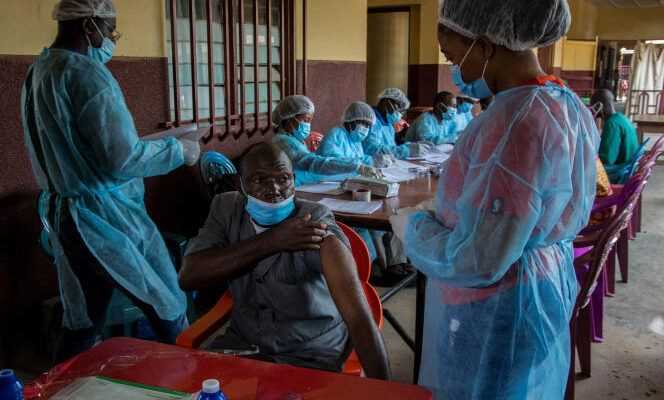To stay up to date with African news, subscribe to the “World Africa” newsletter from this link. Every Saturday at 6 a.m., find a week of current events and debates treated by the editorial staff of World Africa.
Can the Ebola virus wake up in a survivor of a previous epidemic and cause a resurgence of the disease years later? This is what suggests the examination of the virus taken from patients this year in Guinea.
“We clearly show that even after almost five years (…), new epidemics could result from transmission by humans infected during a previous epidemic ”, highlights a study published Wednesday, September 15 in the journal Nature.
The authors make this hypothesis from the analysis of viruses taken from twelve patients infected during the last epidemic to date, this year in Guinea. The latter, which ended in June, killed six people, a low figure compared to this relatively uncontagious disease but particularly fatal for those infected.
In contrast, an epidemic had been much deadlier a few years earlier. The worst in the history of the virus, it killed more than 11,000 people between 2013 and 2016 in Guinea and neighboring countries.
Another strain?
However, in five years, the virus has changed very little. This is the conclusion obtained by researchers from three laboratories – two in Guinea and one in Senegal – which sequenced the viruses at the origin of the 2021 epidemic, an operation which consists in drawing a detailed portrait via their genome. .
And it’s a surprise: one would expect the virus to have mutated a lot more over the years. To understand this, we must go back to the way in which epidemics of this disease appear. The virus circulates among certain species of bats, which transmit it to other animals such as great apes. These, in turn, contaminate human beings.
The majority of epidemiologists consider that this is how epidemics of Ebola virus disease are systematically born. But the study published on Wednesday questions this vision.
If the 2021 epidemic had been caused by animal-to-human transmission, the virus would indeed likely have a much different face compared to the 2013-2016 cases. In this case, it would come from another strain which, over the course of contaminations between animals and then towards humans, would surely have developed different mutations.
The authors of the study therefore argue that the virus had remained in the body of infected patients years earlier. It would have become active again, thus triggering a new epidemic.
The hypothesis of a dormant virus
Everything is not new in this hypothesis. We already knew that the virus can stay in the body. What appears unexpected is that it can cause new disease so long after the original infection. “It’s a new paradigm, the possibility of having transmission from an infected individual during a previous epidemic could be the starting point of a new outbreak”, emphasizes to AFP Alpha Keita, one of the main authors.
There is no absolute proof that this is the case, but the data released on Wednesday leans strongly in that direction. And this reading is shared by several researchers who did not participate in the study.
These are “Impressive and important results”, Judge Trudie Lang, specialist in global health at the University of Oxford, requested by AFP via the British Science Media Center. “This new epidemic seems to have been a reappearance of the previous one and not a new event”, she supports. But now it remains “Many uncertainties, she emphasizes. What causes the dormant infection to turn into a full-blown infection and how do you deal with these cases? “
In fact, with the hypothesis of a virus dormant in some survivors, the situation changes in terms of public health. It will certainly be necessary to ensure a closer follow-up of these former patients. This is why these data provoke a fear among the authors of the study and other researchers: that the survivors are now stigmatized as dangerous individuals.
“It will be important not to increase the burden on survivors yet by making them understand that they can eventually trigger new epidemics”, warns the American immunologist Robert Garry, in a commentary published at the same time by the journal Nature.
